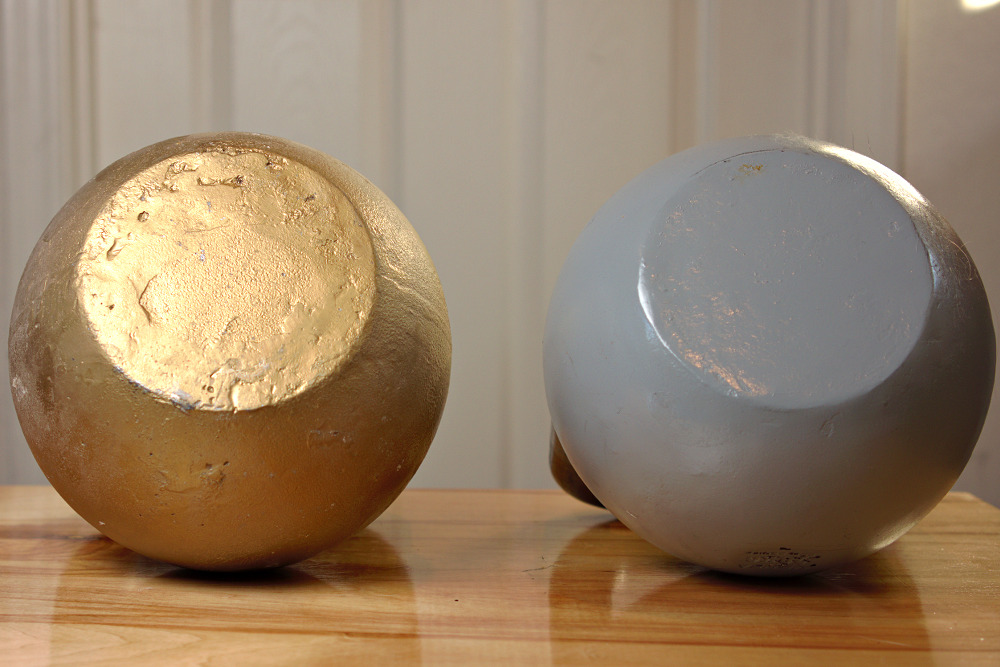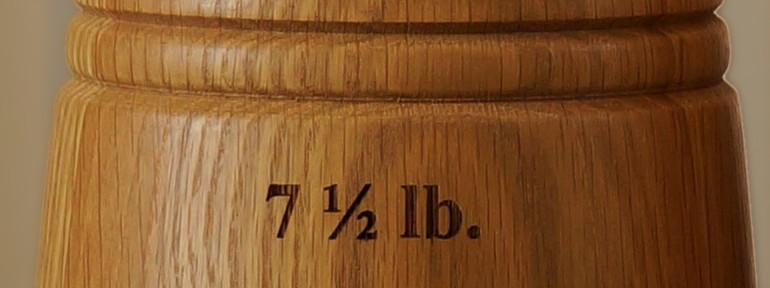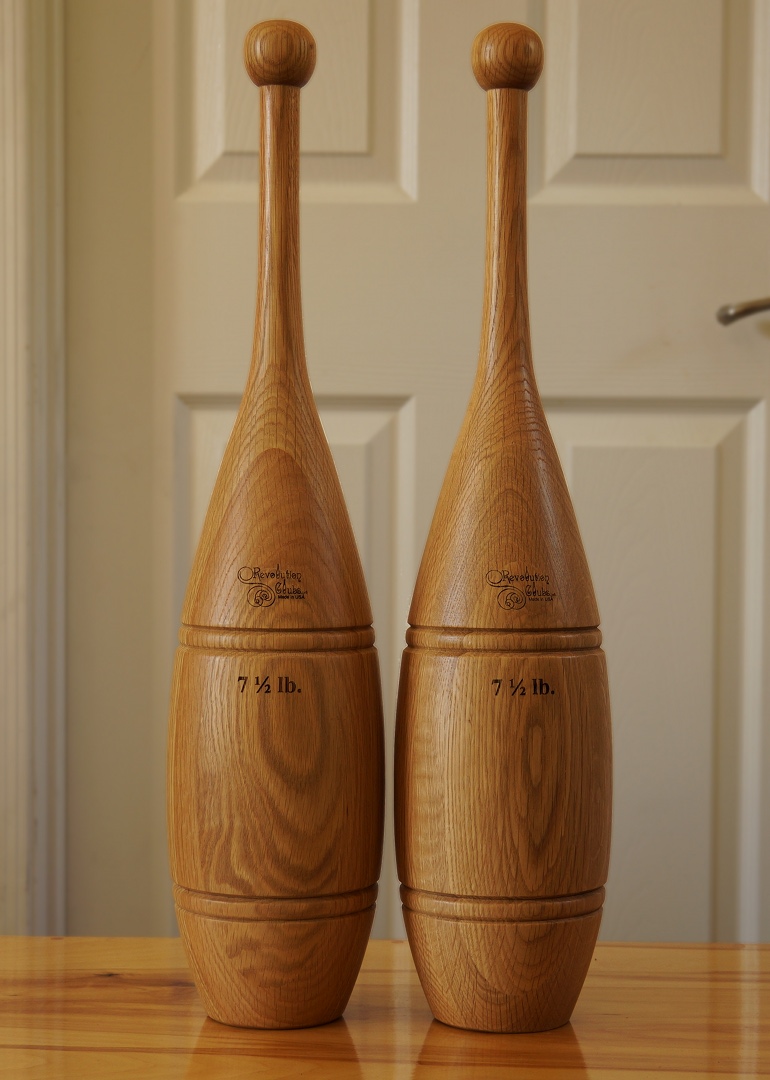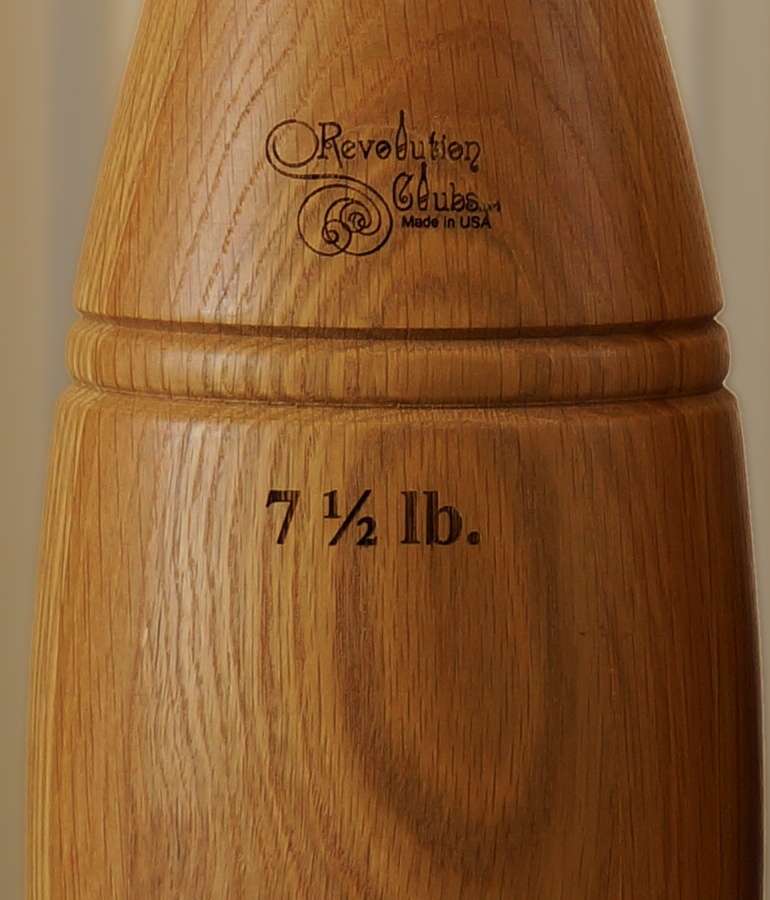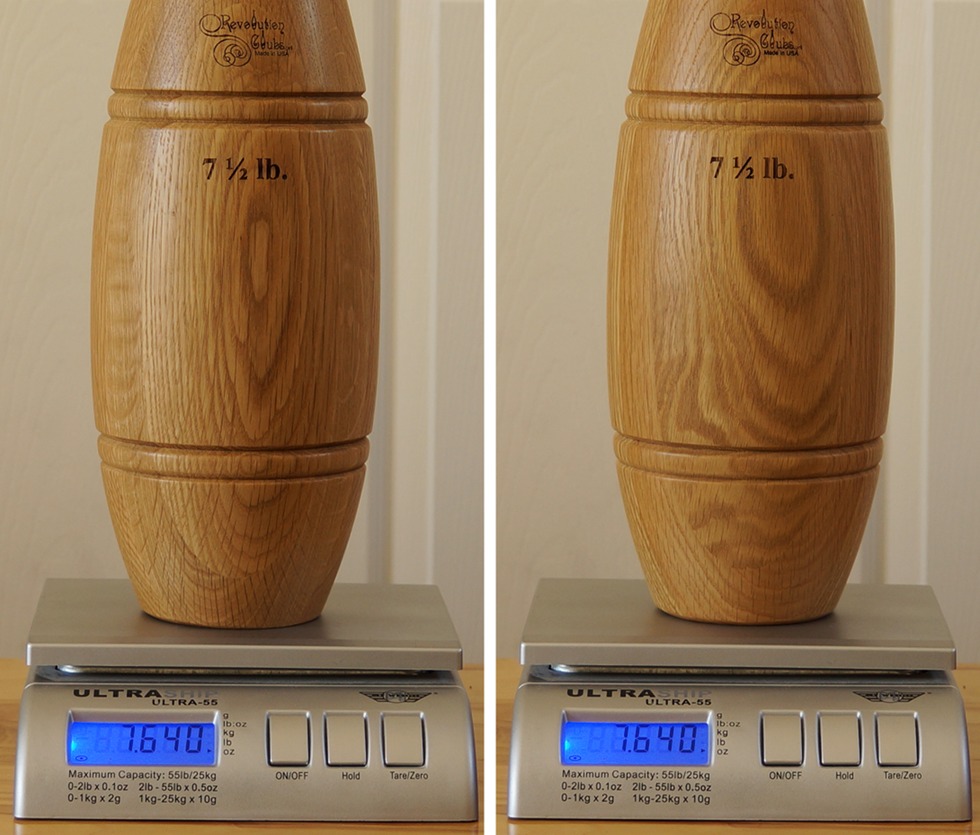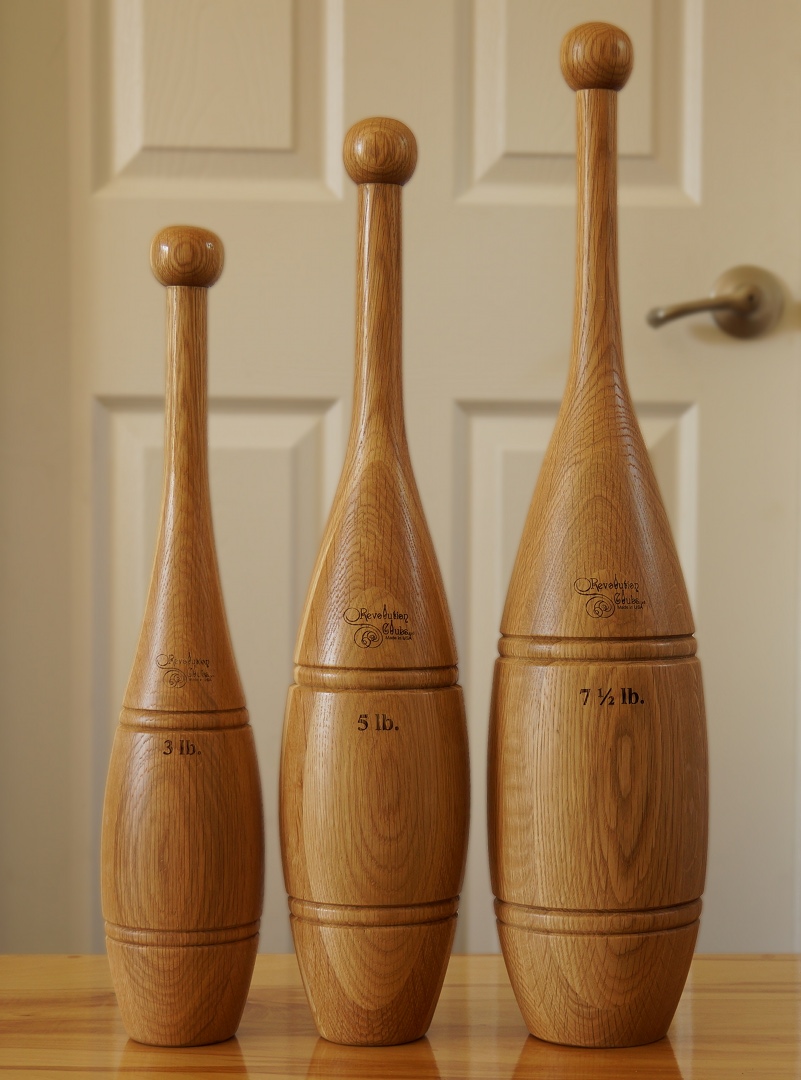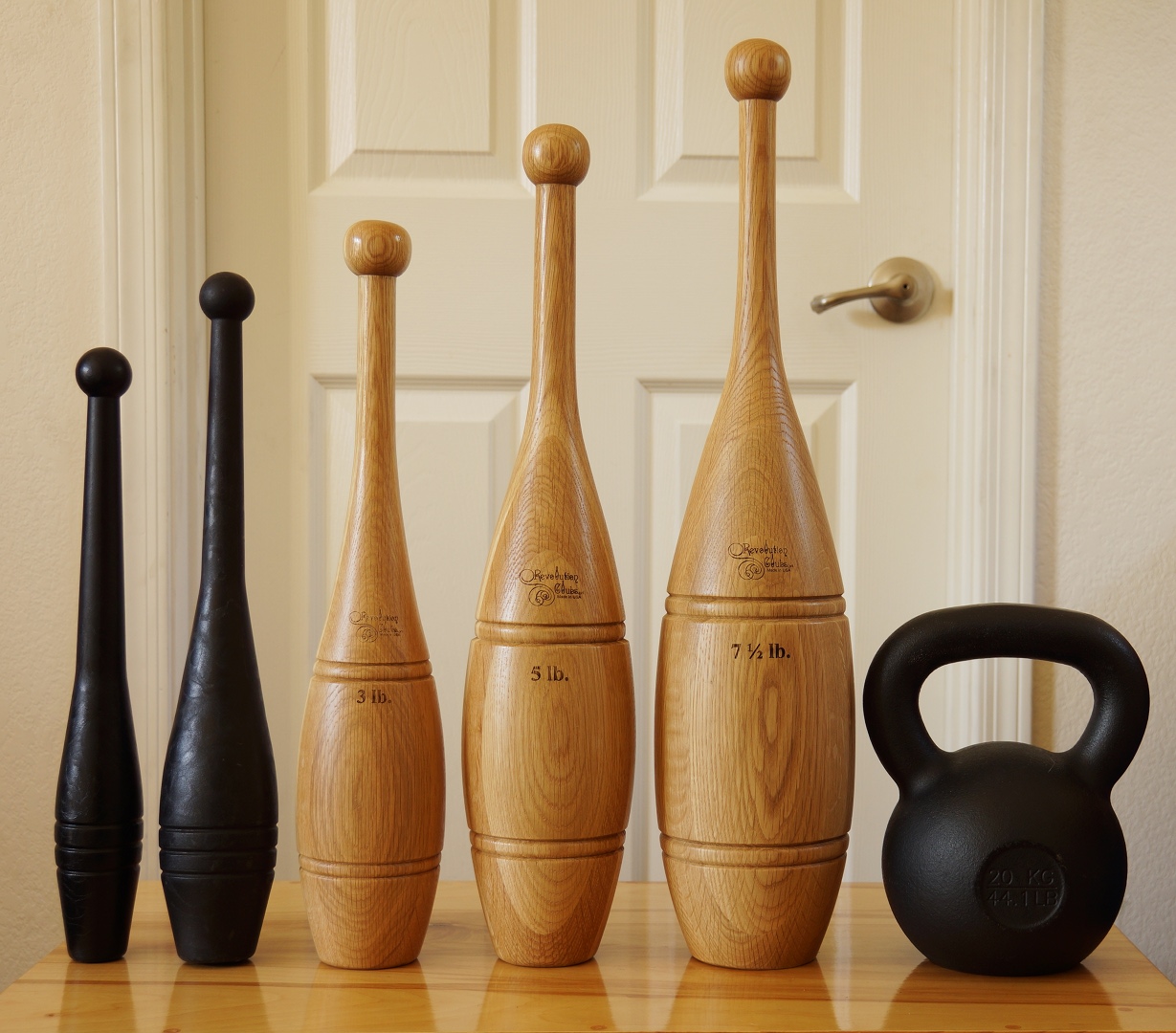Power Systems had a sale last week. I got a 48kg (106lb) gold colored competition style kettlebell for 50% off with free shipping. A couple of days later, they had a 70% off sale with free shipping, so I got two of the black cast iron 100lb kettlebells. I might have gotten some more competition style bells, but the 70% off sale didn’t apply to those.
I’m using the pair of 100lb kettlebells for farmer’s carries. The two inch diameter handles make it a very grip intensive exercise, but farmer’s walks are an excellent conditioning exercise too.
I got the 48kg kettlebell for working on heavy swings. The handle is supposedly around 33mm in diameter, making it less taxing on the grip. I’ve done some two-handed swings with it and it’s not too bad, but that may be because I’ve done some double bell work with (a pair of) lighter bells having a greater total weight. I haven’t tried any one handed swings yet, though I did do a clean just to see what it’d feel like. I’d like to some day be able to do Turkish Get Ups with a 48kg kettlebell too.
In the photos below, the gold colored kettlebell is heavier even though it’s smaller. I’m told that they’re filled with lead in order to keep them at the correct size. Competition style kettlebells are all the same size, regardless of weight. This means that some of the very light ones are mostly hollow and that some of the heavier ones must be filled with a material that’s denser than iron or steel.
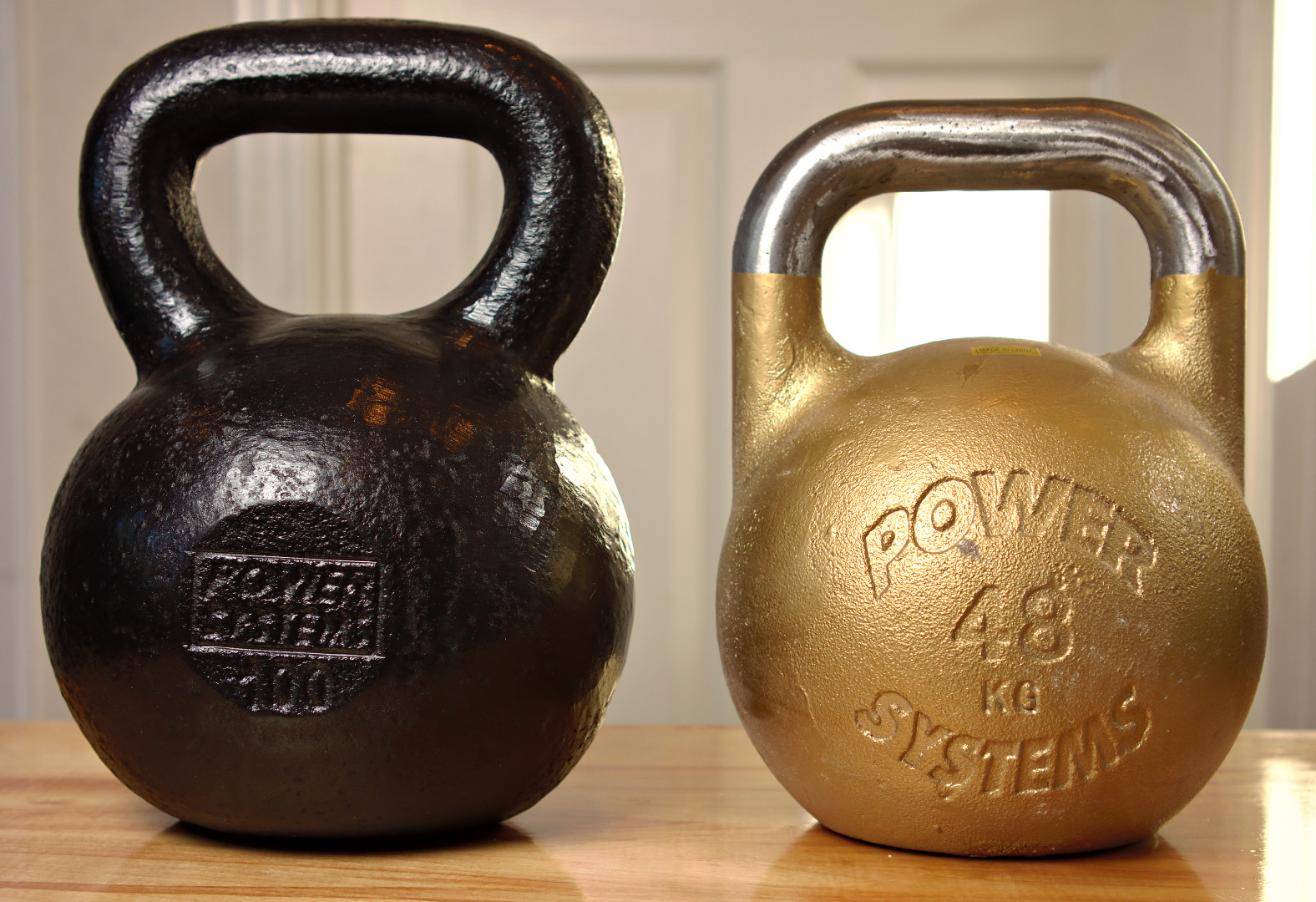
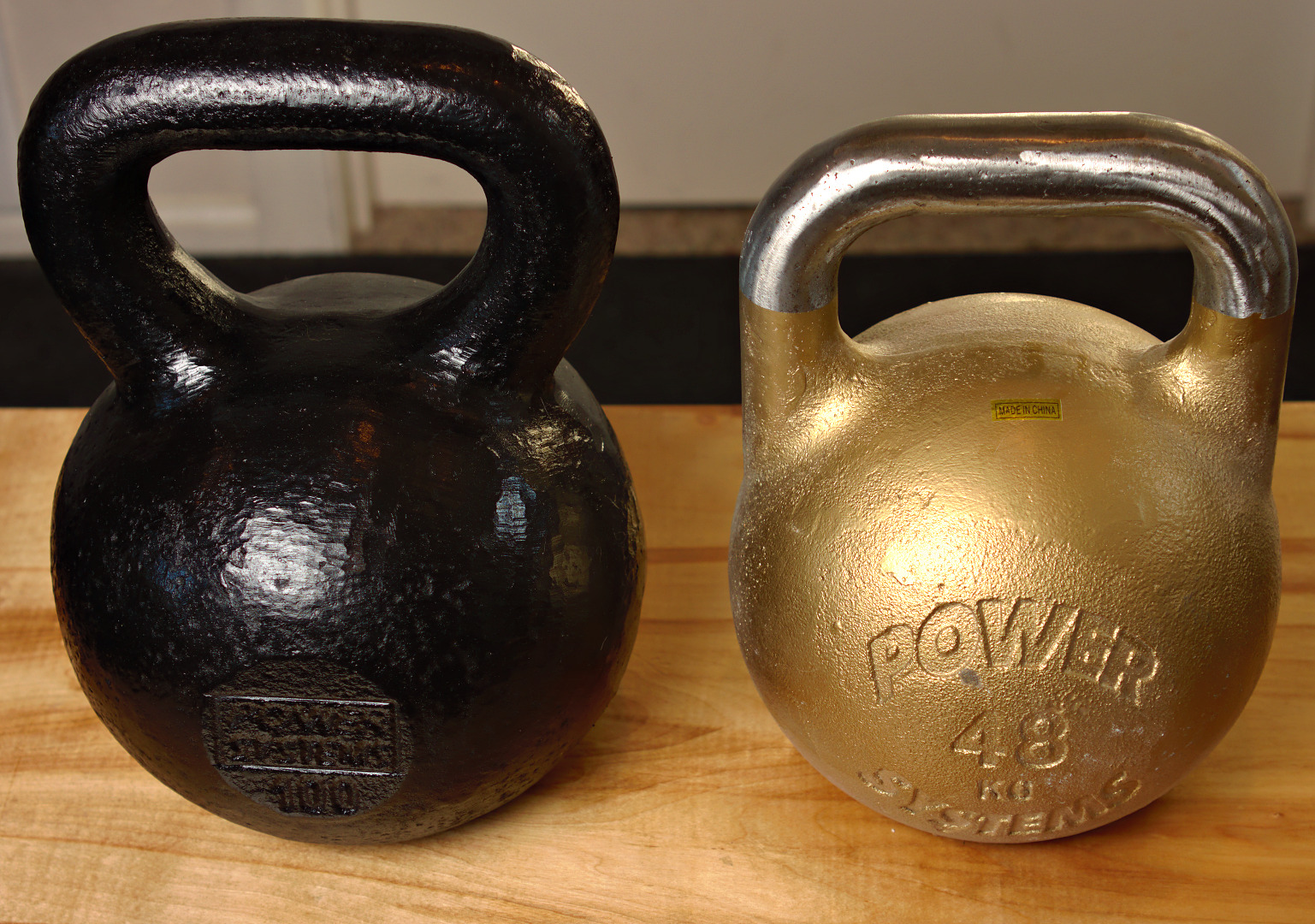
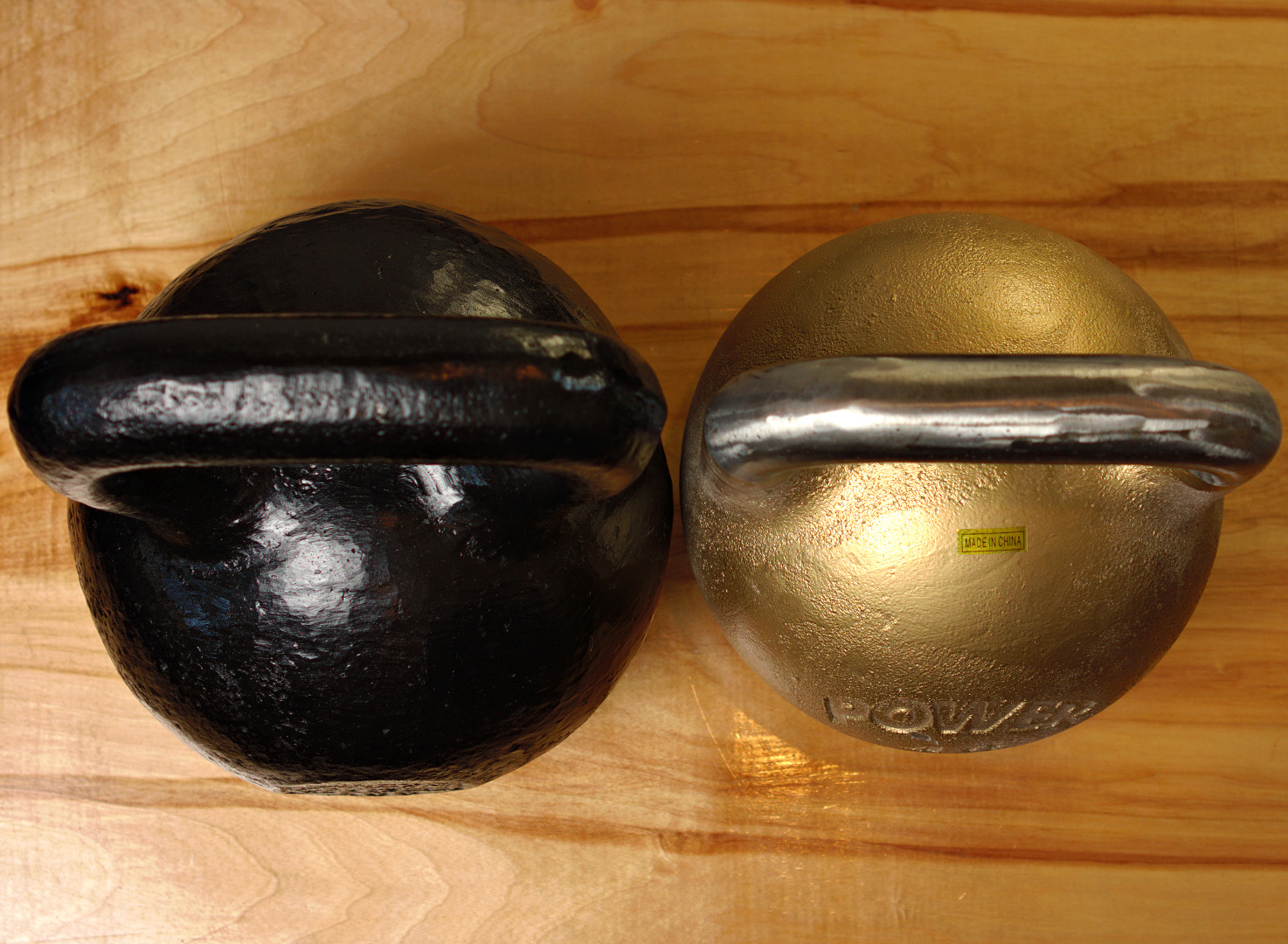 Here’s a look at the 100lb Power Systems kettlebell next to a 40kg AOS Kettlebell and a 36kg Lifeline USA kettlebell. The AOS and Lifeline bells are of comparable quality and both are of much better quality than the Power Systems bell. I like Lifeline USA bells the best of all of the kettlebells that I’ve tried. Though very similar to AOS bells, I like the texture of the Lifeline bells better. The AOS bells have a somewhat rougher texture. It should be noted that AOS and Lifeline USA kettlebells are both made in the USA.
Here’s a look at the 100lb Power Systems kettlebell next to a 40kg AOS Kettlebell and a 36kg Lifeline USA kettlebell. The AOS and Lifeline bells are of comparable quality and both are of much better quality than the Power Systems bell. I like Lifeline USA bells the best of all of the kettlebells that I’ve tried. Though very similar to AOS bells, I like the texture of the Lifeline bells better. The AOS bells have a somewhat rougher texture. It should be noted that AOS and Lifeline USA kettlebells are both made in the USA.
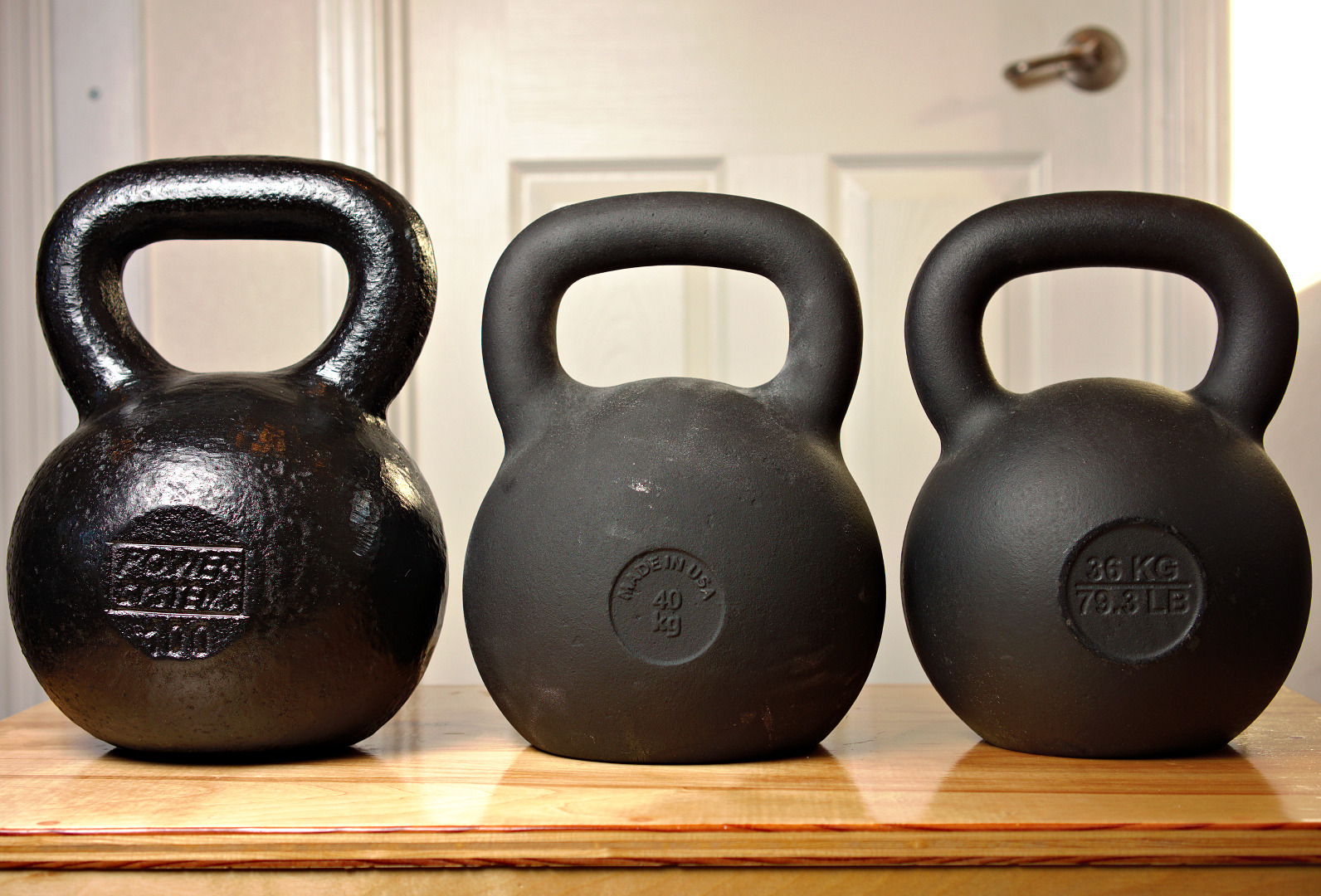 This is what the bottom of each of these bells look like. Note that the Power Systems bell does not have a perfectly flat bottom. Even so, I’ve had no problems with them tipping when doing Renegade Rows with them.
This is what the bottom of each of these bells look like. Note that the Power Systems bell does not have a perfectly flat bottom. Even so, I’ve had no problems with them tipping when doing Renegade Rows with them.
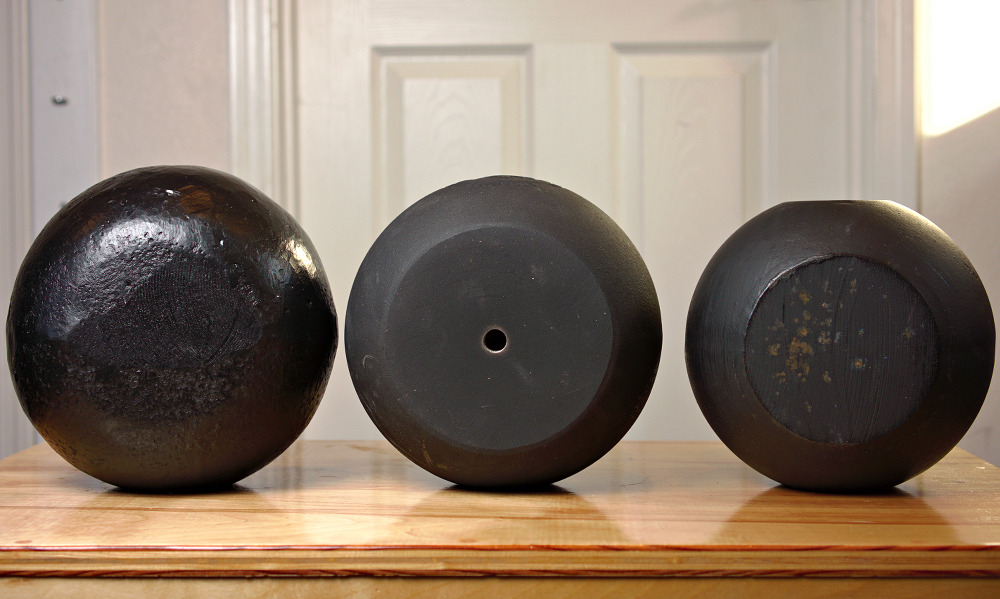 I have only one other competition style kettlebell, a 28kg bell from MDUSA. As expected, the 48kg Power Systems kettlebell has the same size and shape as the one from MDUSA.
I have only one other competition style kettlebell, a 28kg bell from MDUSA. As expected, the 48kg Power Systems kettlebell has the same size and shape as the one from MDUSA.
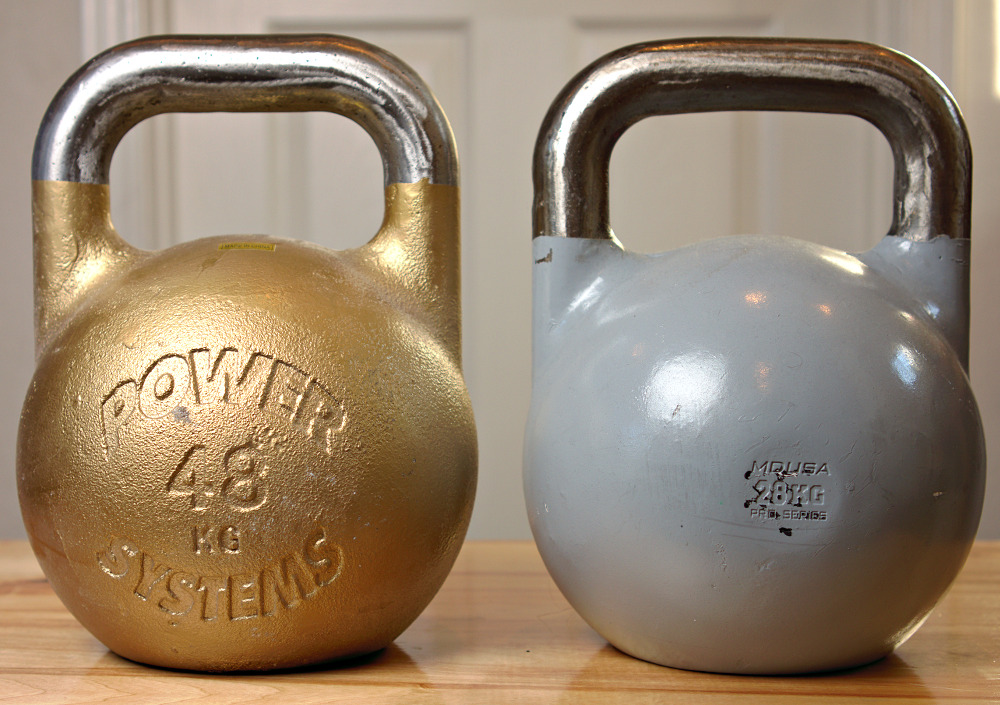 The bottoms of both bells are reasonably flat, though the MDUSA bell looks smoother.
The bottoms of both bells are reasonably flat, though the MDUSA bell looks smoother.
